
I learned a new Japanese word today – Sugoi. One of the women on our trip, Yoshiko, used it when I told her I was getting up at 6:00 a.m. to go row with the North Shore Rowing Club Masters, the “Tyred Swans.” She told me it meant “Brave” but in looking it up on Auntie Google, it is more like ‘Wow’ or ‘Awesome’ or ‘Fabulous.’ (I’ll take it.)

The boathouse is on Lake Pupuke, a collapsed volcano/caldera about 20 minutes from the CBD.
I ordered an Uber the night before to deliver me by 6:50 a.m. The driver arrived early and the traffic was non-existent, so I cooled my jets for a bit before someone showed up, and admired the black swans and baby cygnets “swanning around” the lake. The weather was crisp and very clear. As photos were frowned upon, all you get are a few not particularly close up photos of some swans by the dock. :-) When we were out rowing, a family with wee tiny baby cygnets glided past very close to the 8 . . . wish I had been more “brave” to try to sneak a picture! The cob (male swan) was reaching into water, clipping the long grass/seaweed (“lake weed”?), and laying it across the pen’s back. (Not sure what that was about, but it was fun to watch.)
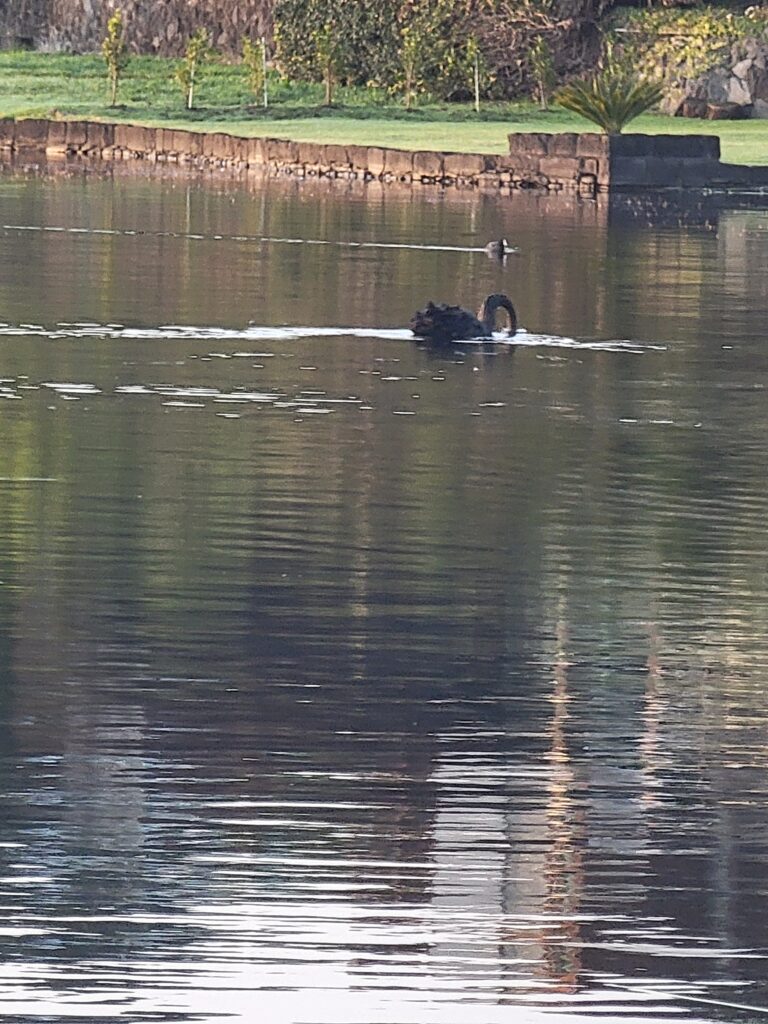
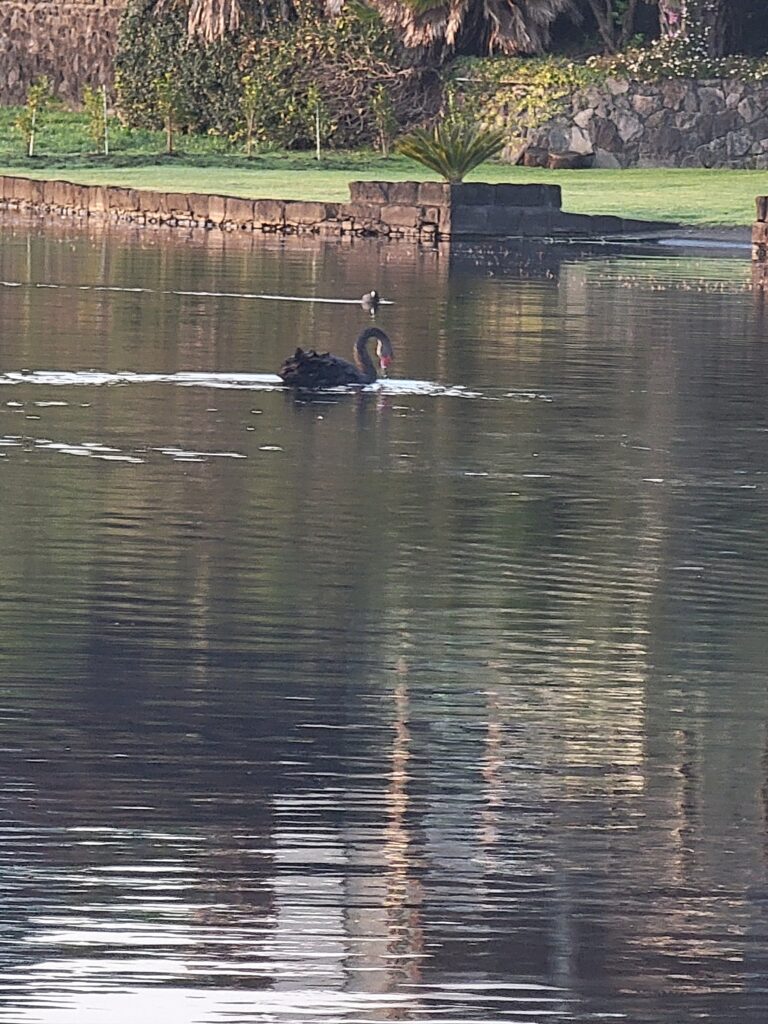
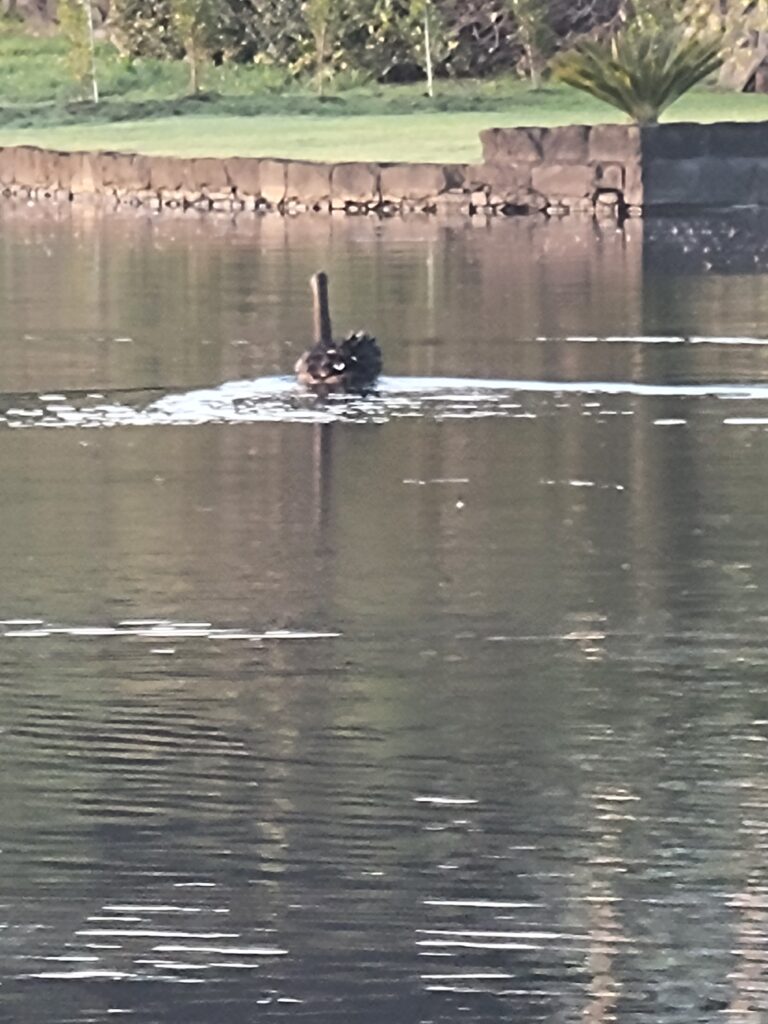
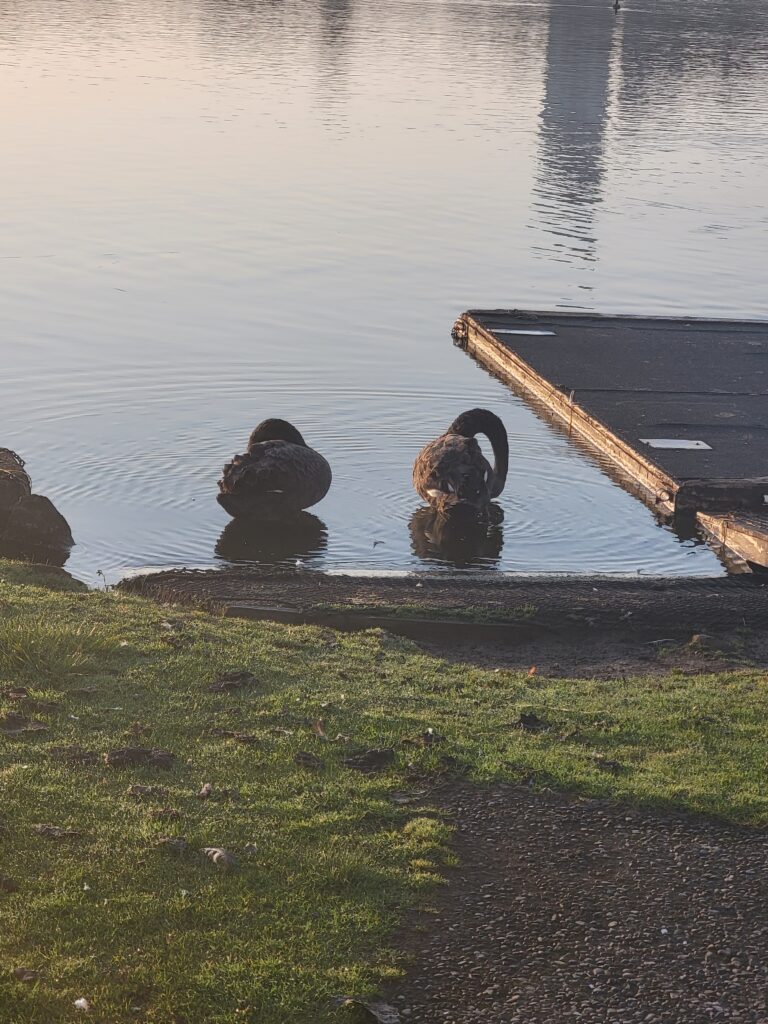
The club was started one year after SERC, where I row in San Francisco. Everyone was excited to be planning their 150th next year – which SERC has been doing this year! (I’d chosen to wear my SERC long-sleeved shirt and was asked about the 1873 on the sleeve, which started that conversation.)
I rowed with the Women’s Masters 8. The actual shell was quite different from ours. The riggers were fixed (no spacers), with no bar “across” the boat. The boat had an incredibly shallow draft and was super heavy. The oars had big fat wooden handles. I liked their paddle logos – blue with swans – but of course forgot to take a photo. (I’ve asked for one – hopefully I can insert it into this post at a later date.)
I was head and shoulders taller than anyone in the boat (except the cox/coach/captain – no motor boats on the lake so the coach coxes). Therefore, carrying it and rolling it was a bit of a chore. When I put the boat on my shoulder, the two ports (or “stroke side” as they’re called) had nothing to carry… the boat was easily 5 inches above theirs!
They get into the boat a pair at a time, which was easy enough, especially as the draft was so shallow that it was basically at the level of the dock. (Also they dock the boat on the same side as we do – stepping in with the right foot first – which made the process easier.)
They had a clever way of making sure that everyone had the same seat position at the finish. They had a mark on the boat deck to the side of the seat rails. Once everyone was in the boat, you put your finger on your back seat wheel, matching it up to the line. Then, you adjusted your feet from there, keeping your legs straight, so that everyone was at the same spot at the finish. Took the guess work out of things.
We rowed around the lake for about an hour and a half, maybe two hours. The lake isn’t particularly big, so there was a lot of turning. :-) There are no speakers in the boat; the cox has a headset, but it is attached to a speaker that is up with her. I learned new terminology (“Easy” for “Weigh enough,” etc.), and we worked on various drills (mostly balancing and square blade work), then rowed 6s and 8s. Unfortunately with the super shallow draft (and inability to move the rigger) I couldn’t really get the oar in position on my body. The port behind me (trying to be helpful) told me to bring the oar handle “up to” the standard “under the bra” level – but as soon as I did it, the cox/coach shouted that I’d been fine, now I was way too deep in the water. ;-) We also were constantly down to port (“stroke side”), so in trying to “tap down” farther, every now and again that big fat wooden handle wound up actually under the gunwale!
We did have two crabs – one my port pair that knocked her flat. The second though was a nearly ejector crab of the port-side gal in the next pair, where her feet actually came out of the shoes! She sort of “starfished” on both gunwales and kept herself in the boat. (Such drama…!)
The water is so clean and clear that they don’t even need to wash the boats or oars. That was a welcome surprise! The MRA oar lapel pins that I’d brought were well received. That was fun.
I was invited to “have a coffee” with them at their local “coffee house.” Oh. My. Goodness. I have never seen more beautiful food in my life. Rebecca, the cox/captain/coach, told me that one of the “biggest problems” in New Zealand was that all the food was amazing. So much for my idea of trying to lose a pound or two on this trip!


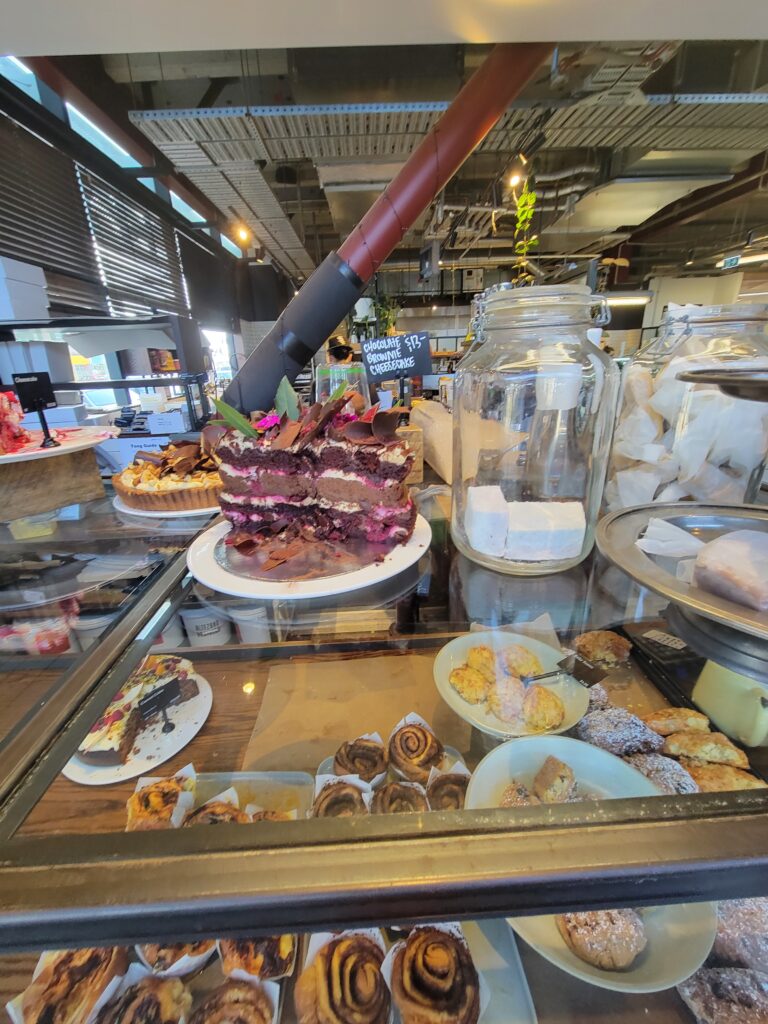
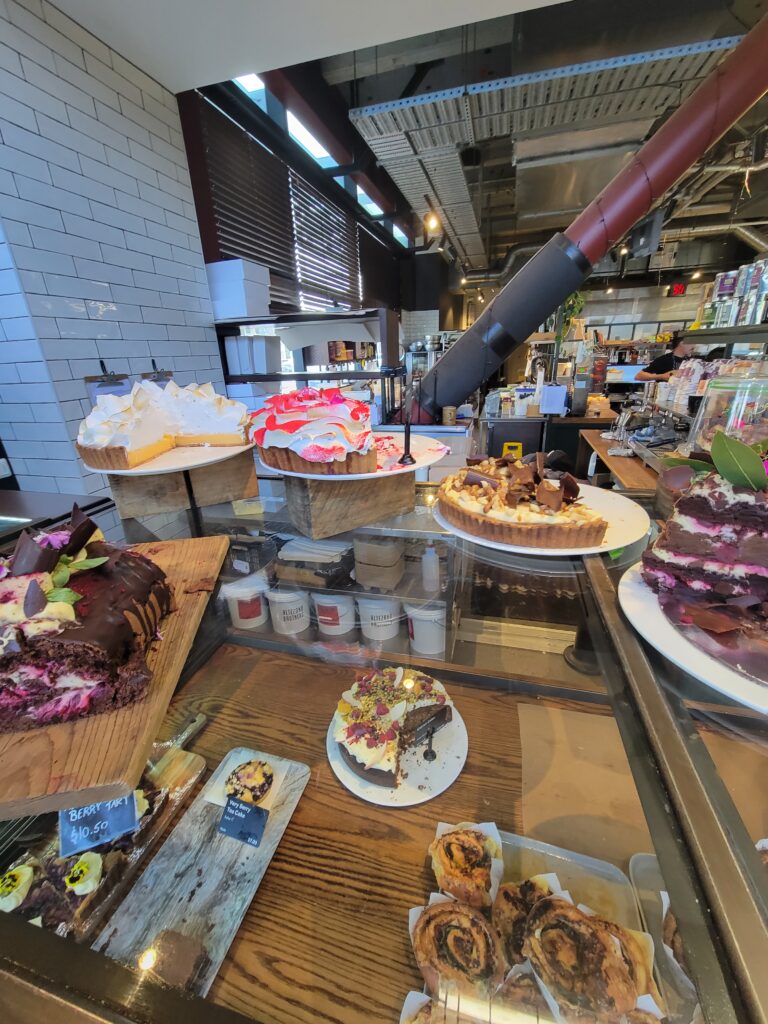
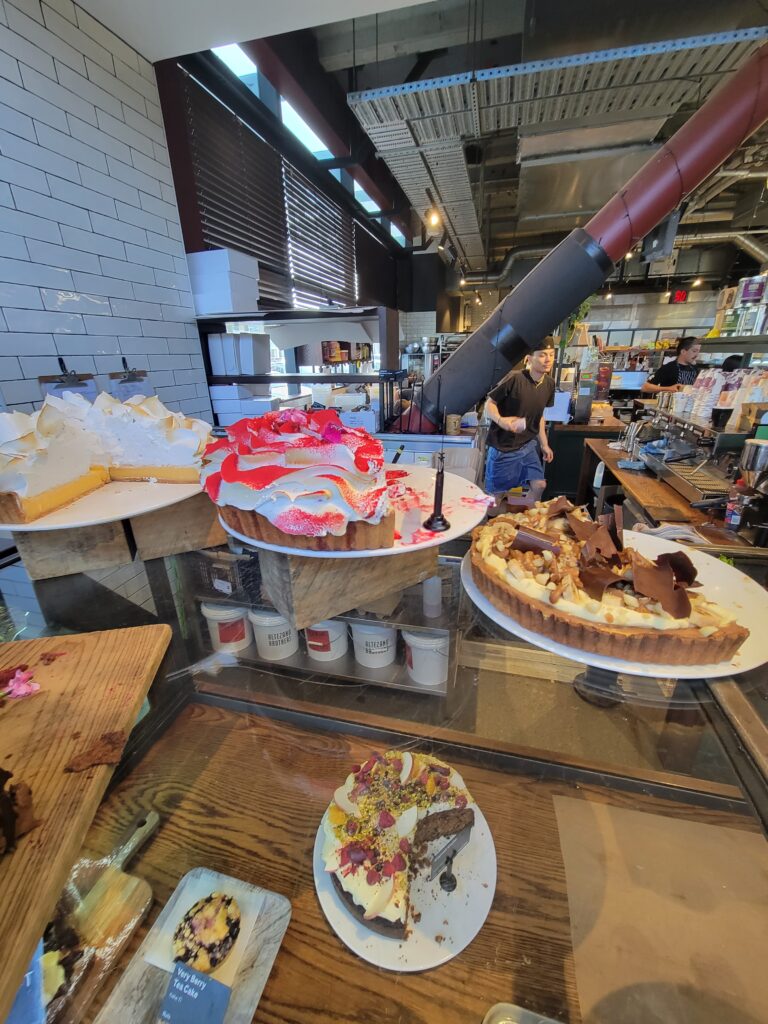
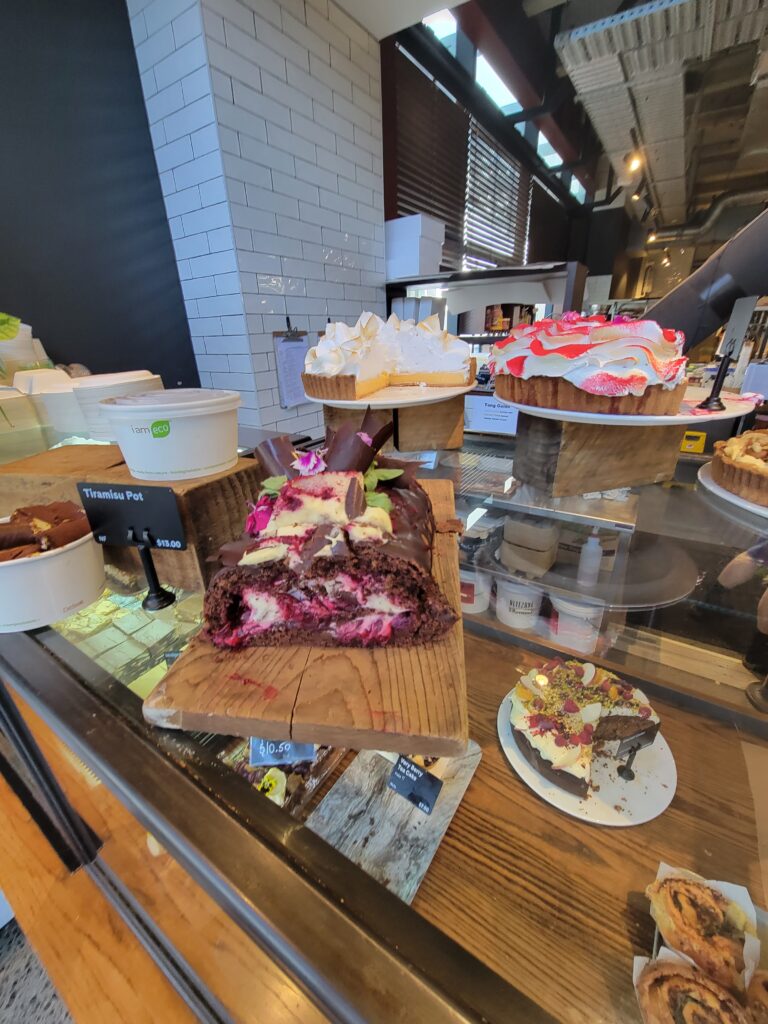

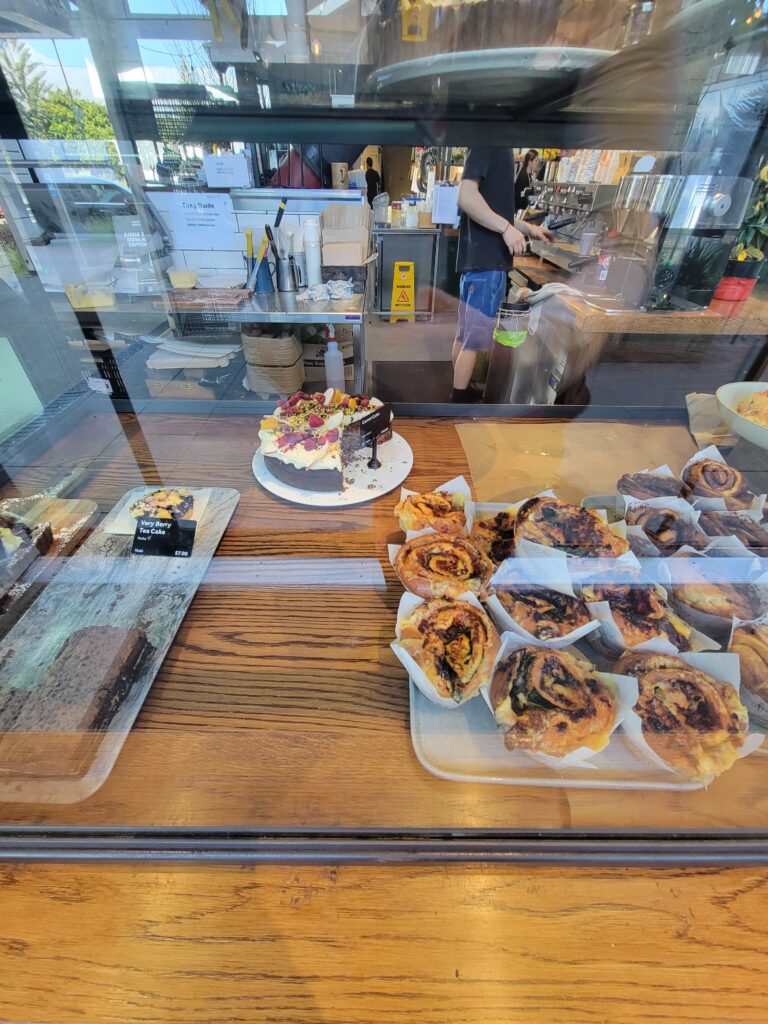
Rebecca was great. She specializes in coaching programs for masters rowers – FasterMastersRowing.com. They have a podcast on RowingChat, e-newsletter, etc. Rebecca is often invited to commentate on rowing events – she was the “Studio Expert” at the London Olympic Games and is one of the commentators at the Henley Royal Regatta. She’ll have a booth for her programs at Head of the Charles. I asked how she dealt with such a long plane trip to Boston and she said “It’s not as bad as the Henley!”

I got back to the hotel with just enough time to change and get to the coach taking us to meet with Dane from Ngati Whatua, a Māori Iwi at Bastion Point/Mission Bay. We learned about a controversial topic – Māori Land Rights and the Treaty of Waitangi. We also learned a lot about the myths and legends of the Māori, especially related to the land/sea/wind/area of Tamaki Makaurau (the Māori name for Auckland, which translates to “desired by many.”)
Dane was amazing. He particularly discussed how the Māori language is now an option for school kids. He had not had “te reo Māori” (“the Māori language”) growing up, but did a one year immersion when the government started advertising that having it was a bonus for jobs. He said that his kids did not have “te reo,” but his grandkids did. He talked a bit about his 93 year old dad, who unfortunately had taken a spill at Tapatapuatea marae (“place of worship”) when they had just been visiting Raiatea, which the Māori consider the starting point of their people from which all Polynesia was colonized.
Our eldest tour member, Dave, was “voluntold” that he would be our Rangatira (“Chief”) and that he had to introduce us in a particular way to Dane, including a hongi. Then, we sang a waiata to Dane. It was called Te Aroha, and went:
Te aroha (“Love”)
Te whakapono (pron: vah-ka-po-no) (“Faith”)
Me te rangimari-e (“And peace”)
Tatou tatou e (“Be among us all”).
HERE is the song. We did our best :-) (Actually, our guide, Rod, said that we did an amazing job, and I do think that we did. He wanted us to sing to the music, which he had on his cell phone. The problem was that the pitch was outside the reach of just about all of the group. So when he said that it was time for the waiata, I (ahem) just started singing in a key that I knew everyone could reach. He didn’t have a chance – ha ha. Such a disturber, I am.)
We had a very lovely lunch in a local restaurant on the water, and then the rest of the day was our own. Lynn was able to go out and find a few sundry items – and (you guessed it!) I thought I’d memorialize this blog!
Tonight, the “Welcome Dinner” at a local restaurant – suboptimal (free) wine, pretty good food. Here’s a photo of the Sky Tower lit up from our walk back!
If you want $100 off, call OAT at 1-800-955-1925 and request a catalog, tell them you were referred by Sandy Shepard, customer number 3087257, and get $100 off your first trip!

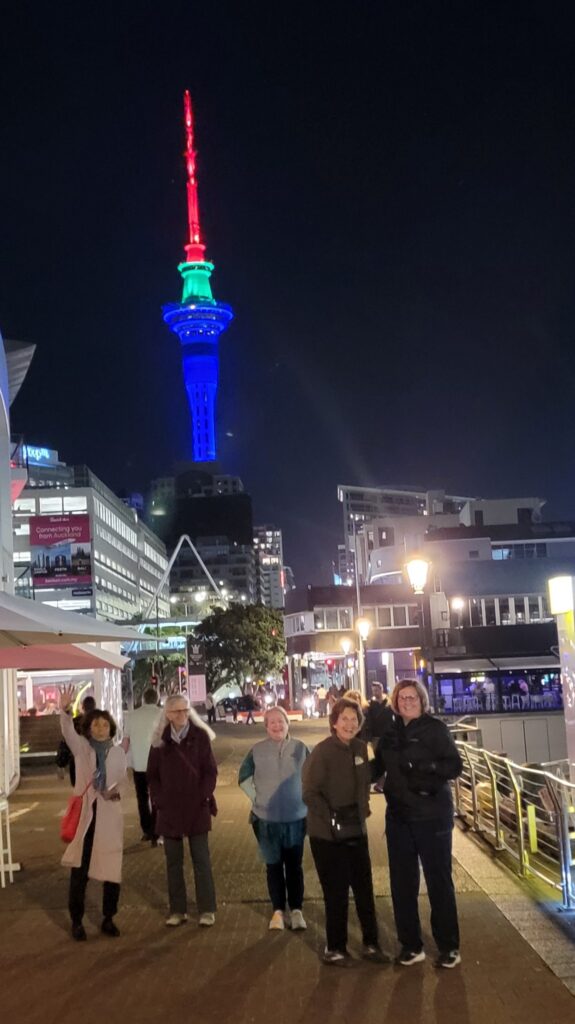
Love reading your blog. Of course I hardly understand about rowing! Ha! And btw, it might be me, but sadly can’t see the pics. Thanks for sharing your trip with us. Look forward to more! ❤️
That’s odd! I hate to say it, but I think it’s you :-)